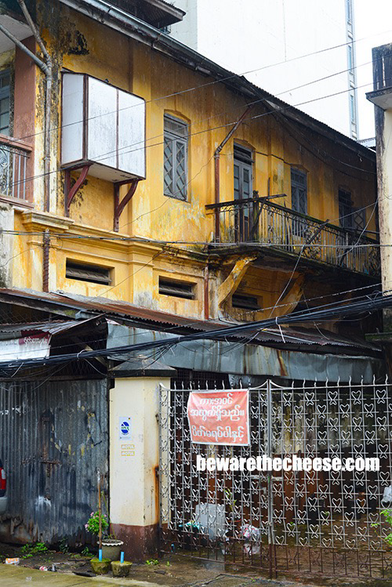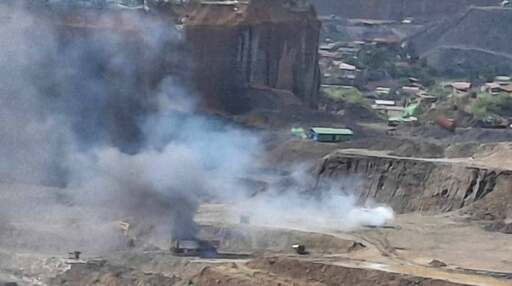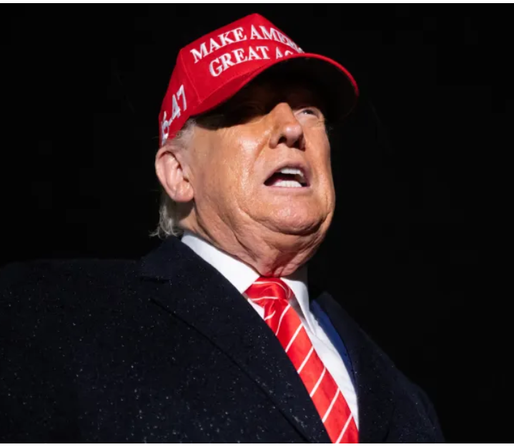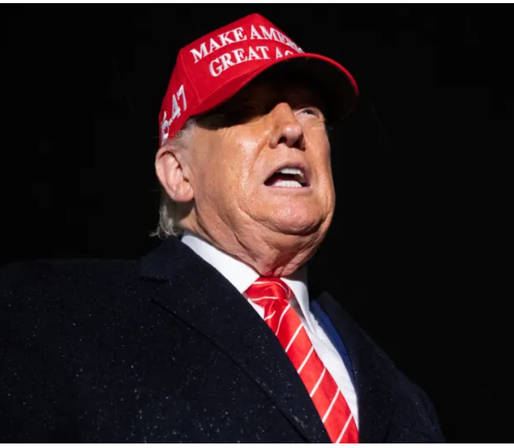From 9 June, residents of #Afghanistan, #Myanmar, #Chad, #CongoBrazzaville, #EquatorialGuinea, #Eritrea, #Haiti, #Iran, #Libya, #Somalia, #Sudan, #Yemen can no longer enter the #US. Far-reaching restrictions apply to: #Burundi, #Cuba, #Laos, #SierraLeone, #Togo, #Turkmenistan, #Venezuela.
A yellow building in #Yangon, #Myanmar. A daily photo from my archives.
bewarethecheese.com #photography #travel #asia #southeastasia
bewarethecheese.com #photography #travel #asia #southeastasia
Myanmar military sets fire to mining equipment in Hpakant, forcing residents to flee
Trump signs proclamation to ban travel from 12 countries [including Myanmar] | CNN Politics
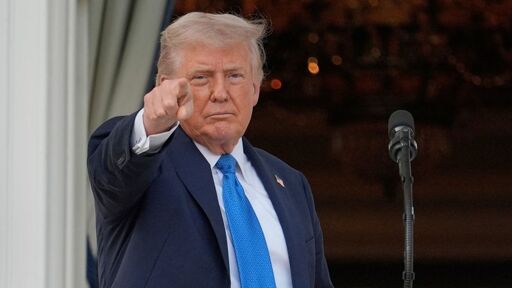
Trump signs proclamation to ban travel from 12 countries [including Myanmar] | CNN Politics - Lemmy.ca
cross-posted from: https://lemmy.ca/post/45504297 [https://lemmy.ca/post/45504297] > cross-posted from: https://lemmy.ca/post/45504296 [https://lemmy.ca/post/45504296] > > > The ban will fully restrict entry of nationals from 12 countries: Afghanistan; Myanmar, also known as Burma; Chad; Republic of the Congo; Equatorial Guinea; Eritrea; Haiti; Iran; Libya; Somalia; Sudan; and Yemen.
Venezuela warns US is dangerous anyway as countries respond to Trump travel ban https://www.theguardian.com/us-news/2025/jun/05/venezuela-warns-us-is-dangerous-anyway-in-trump-travel-ban-retort #DemocraticRepublicoftheCongo #MiddleEastandnorthAfrica #Trumpadministration #SouthandcentralAsia #EquatorialGuinea #USimmigration #USpolitics #Venezuela #Worldnews #Americas #Somalia #Myanmar #Eritrea #USnews #Africa #Yemen #Haiti #Libya #Sudan #Iran #Chad
United States President Donald Trump has signed an executive order imposing a full travel ban on people from 12 countries and restricting the citizens of seven other countries, the White House said. The banned countries include Afghanistan, Chad, Congo, Equatorial Guinea, Eritrea, Haiti, Iran, Libya, Myanmar, Somalia, Sudan and Yemen. #us #usa #news #America #trump #donaldtrump #Afghanistan #Chad #Congo #EquatorialGuinea #Eritrea #Haiti #Iran #Libya #Myanmar #Somalia #Sudan #Yemen
United States President Donald Trump has signed an executive order imposing a full travel ban on people from 12 countries and restricting the citizens of seven other countries, the White House said. The banned countries include Afghanistan, Chad, Congo, Equatorial Guinea, Eritrea, Haiti, Iran, Libya, Myanmar, Somalia, Sudan and Yemen. #us #usa #news #America #trump #donaldtrump #Afghanistan #Chad #Congo #EquatorialGuinea #Eritrea #Haiti #Iran #Libya #Myanmar #Somalia #Sudan #Yemen
Recent controversy surrounding a supposed “humanitarian corridor” through Bangladesh into Myanmar appears to be based on a complete distortion of facts.
UN Resident Coordinator Gwen Lewis clarified that no discussions have taken place regarding any such corridor. For humanitarian aid to pass, both Bangladesh and Myanmar would need to give formal consent. Only then could the UN engage in the process. Lewis even questioned the origin of the term “humanitarian corridor,” emphasizing that it’s not something currently on the table.
However, several media outlets, including Deutsche Welle Bangla, misrepresented her words. Their misleading translation implied that Bangladesh had already initiated the corridor without UN involvement—a claim entirely unsupported by Lewis’s actual statement. The fabricated quote was quietly deleted, but not before misinformation spread like wildfire on social media.
Public outrage followed, with conspiracy theories and political accusations flooding platforms like Facebook. Some went as far as to accuse the government of selling out national interests or plotting war to maintain power. Others demanded resignations from top officials based on nothing more than misquotes and assumptions.
This event mirrors a recent uproar over a redefinition of “freedom fighter” in a new ordinance—where many reacted without reading the actual document. In both cases, premature outrage replaced thoughtful discourse.
The real takeaway from Lewis’s remarks is clear: no “humanitarian corridor” exists, nor is one being discussed. Any such aid channel would require the agreement of three parties—Bangladesh, Myanmar, and the Arakan Army. Only after that would the UN step in to support the effort.
Given this context, the frenzy around the “corridor” seems to stem less from facts and more from politically motivated disinformation—some of which may be traced to coordinated efforts in regional media.
#Bangladesh #DW #News #CorridorIssue #Myanmar #Dhaka #UN #Politics #Geopolitics #USA #EU #FakeNews
UN Resident Coordinator Gwen Lewis clarified that no discussions have taken place regarding any such corridor. For humanitarian aid to pass, both Bangladesh and Myanmar would need to give formal consent. Only then could the UN engage in the process. Lewis even questioned the origin of the term “humanitarian corridor,” emphasizing that it’s not something currently on the table.
However, several media outlets, including Deutsche Welle Bangla, misrepresented her words. Their misleading translation implied that Bangladesh had already initiated the corridor without UN involvement—a claim entirely unsupported by Lewis’s actual statement. The fabricated quote was quietly deleted, but not before misinformation spread like wildfire on social media.
Public outrage followed, with conspiracy theories and political accusations flooding platforms like Facebook. Some went as far as to accuse the government of selling out national interests or plotting war to maintain power. Others demanded resignations from top officials based on nothing more than misquotes and assumptions.
This event mirrors a recent uproar over a redefinition of “freedom fighter” in a new ordinance—where many reacted without reading the actual document. In both cases, premature outrage replaced thoughtful discourse.
The real takeaway from Lewis’s remarks is clear: no “humanitarian corridor” exists, nor is one being discussed. Any such aid channel would require the agreement of three parties—Bangladesh, Myanmar, and the Arakan Army. Only after that would the UN step in to support the effort.
Given this context, the frenzy around the “corridor” seems to stem less from facts and more from politically motivated disinformation—some of which may be traced to coordinated efforts in regional media.
#Bangladesh #DW #News #CorridorIssue #Myanmar #Dhaka #UN #Politics #Geopolitics #USA #EU #FakeNews
Venezuela warns US is dangerous anyway in Trump travel ban retort https://www.theguardian.com/us-news/2025/jun/05/venezuela-warns-us-is-dangerous-anyway-in-trump-travel-ban-retort #DemocraticRepublicoftheCongo #Trumpadministration #EquatorialGuinea #USimmigration #Venezuela #Somalia #Myanmar #Eritrea #Yemen #Haiti #Libya #Sudan #Iran #Chad
📰 Trumps inreisverboden keren terug, mensen uit twaalf landen niet meer welkom in VS
